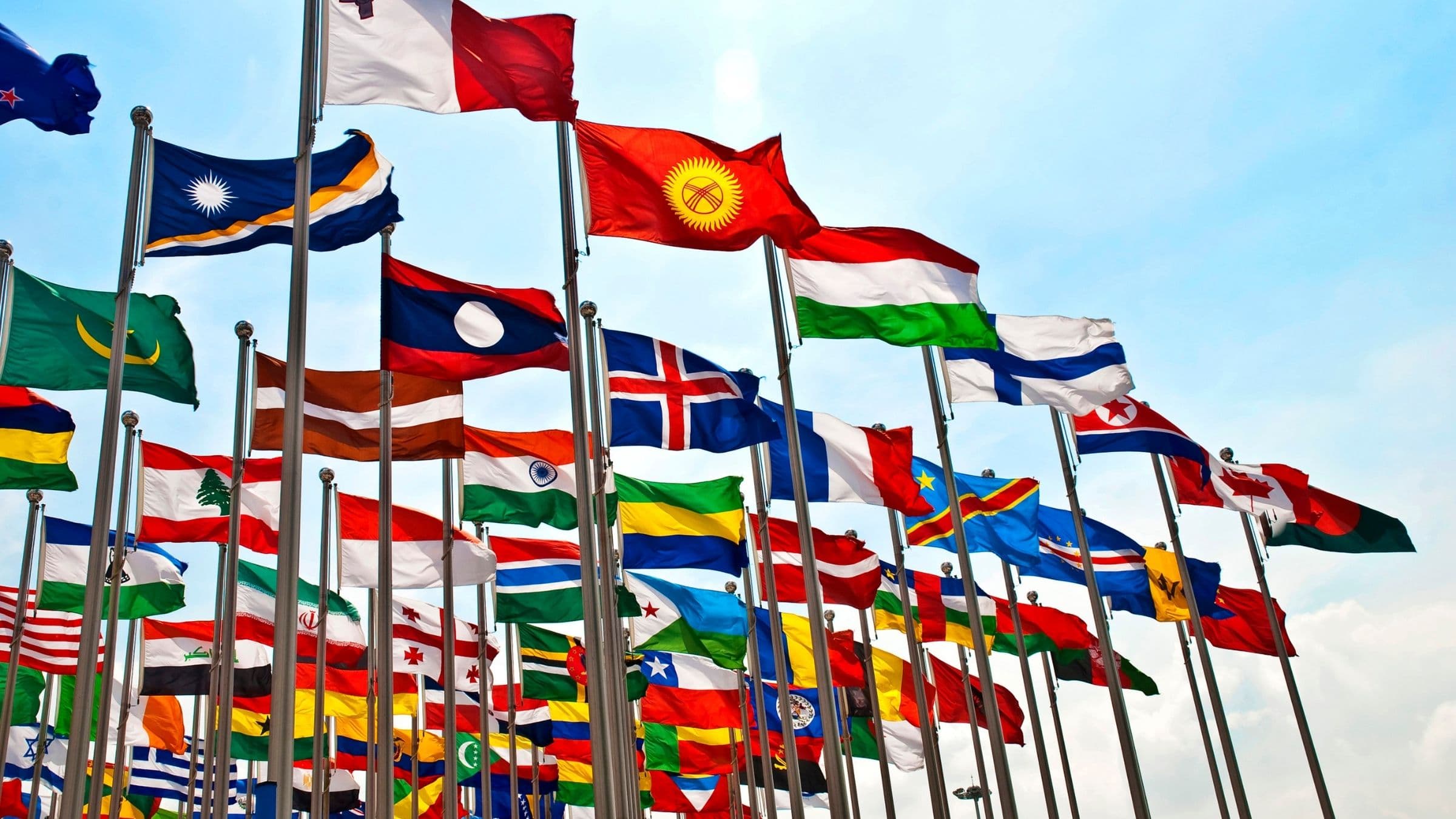
COUNTRY PROFILE
Discover more about the Italian market including overviews about the retail, foodservice, and food-processing sectors. Events, resources, and more are linked throughout the profile.

7th
largest market for U.S. consumer food products in Europe

$186.5 Million
total of U.S. processed foods exports in 2023

$7.4 Billion
of U.S. imports from Italy in 2023
Focus Economics reports that Italy’s economy, the Eurozone’s third largest, has languished in recent years. In 2010, the country’s gross domestic product (GDP) was roughly three-quarters that of France’s; by 2022, that figure slipped to less than two-thirds. A declining population, a high stock of debt, a rigid jobs market and copious red tape all hold back momentum. Conditions vary considerably by region, with the south lagging far behind the more dynamic north in terms of economic growth and job creation. In 2022 Italy’s GDP was a robust 3.7% and dropped to only 0.7% in 2023 and is forecast for growth of only 0.5% in 2024.
Italy’s industrial sector is still important to its economy, despite having lost clout over the last few decades as a share of GDP. Italy boasts particular strengths in automotive, pharmaceuticals, machinery, and fashion and luxury goods. Global brands like Fiat, Ferrari, and Luxottica exemplify Italy’s reputation for quality and design. The services sector, including tourism, banking, and retail, plays a significant role in Italy’s economy. Italy’s rich cultural heritage and scenic beauty make it one of the world’s top tourist destinations, significantly contributing to national revenue. The banking and finance sector, centered in Milan, is also important to the economy.
In the coming years, large inflows of European Union (EU) funding will support activity. However, comprehensive structural reforms to boost the country’s meager potential growth rate are unlikely; as such, Italy will continue to lose economic clout relative to other Eurozone members over our forecast horizon.
Italy’s population totaled 61 million in 2023 (CIA World Factbook Est.). This represented an increase of 4.1 million over the figure for 2000, but the population has begun to decline and will reach 59.1 million by 2030. The median age was 48.1 years in 2023, 8.9 years greater than the figure for 2000 and significantly higher than the regional average. As measured by median age of population, Italy currently has the second oldest population in Europe (behind Germany). Those aged 65 plus account for 23.3% of Italian population, which is about 14.2 million.
USDA’s Office of Agricultural Affairs (OAA) in Rome, hereinafter referred to as FAS Post Rome, reported that Italy’s economy is the eighth largest in the world and the third largest in the euro-zone, with a GDP estimated at US$2 trillion and a per capita GDP of US$34,083 in 2022. Being a net agricultural importer, most raw materials and ingredients are imported, as Italy’s economic strength is in the processing and the manufacturing of goods, primarily in small and medium-sized family-owned firms.
Italy exports mainly consumer products to the U.S., while the U.S. exports mostly bulk commodities to Italy. In 2023, U.S. agricultural exports to Italy were nearly US$18 billion, while U.S. imports from Italy were $7.4 billion. Italy was the top exporter of agricultural products on a global basis to the U.S. in 2023.
Italy is the seventh largest market for U.S. consumer food products in Europe and the 37th largest U.S. market overall. U.S. exports of processed food products to Italy grew 5% in 2023 to US$186.5 million.
Top processed foods exported to Italy in 2023 included:

$99.2 Billion
total of retail sales of packaged food products in 2023

25.7%
increase in retail sales since 2019

$117 Billion
estimated in sales of packaged food products by 2028
According to Euromonitor, retail sales in the packaged food market in Italy have been estimated to reach US$99.2 billion in 2023. That makes Italy the 10th largest packaged food market in the world. That also represents growth of 25.7% and US$20.3 billion since 2019. By the year 2028, the retail sales in the packaged food market in Italy is expected to reach US$117 billion, growth of 12.8% or US$13.2 billion.
High growth categories in the forecast include:
FAS Post Rome reports that the Italian retail food market is highly diversified. Italy’s food retail sales reached US$170.4 billion in 2022, a 2.1% increase compared to 2021. Increased sales were registered at discount stores (+4.1%), supermarkets (+2.8%), hypermarkets (+2.7%), and small local grocers (+1%). Conversely, convenience stores registered a 1% decrease. Multichannel strategies, blending online and in-store sales, are integral to success across retailing. Grocery retailers are paving the way towards innovative solutions in this respect, offering e-commerce shopping with deliveries to the consumer’s home and in-store lockers for customers to collect online orders.
Hypermarkets, supermarkets, convenience, discount, and specialized stores coexist with traditional corner shops and open-air markets. Most supermarkets are located in northern Italy, followed by the south, and then by the central region. Convenience stores and small supermarkets are commonly located in central areas of towns and cities. Hypermarkets and supermarkets tend to be positioned within large shopping malls in suburban areas and on the outskirts of cities.
Conad was Italy’s leading grocery retailer in 2022 after the acquisition of approximately 1,600 points of sale from Auchan Italia, operated under the brand names Auchan, Sma, and Simply. They are followed by Coop Italia, Selex Gruppo Commerciale SpA, Esselunga SpA, and Gruppo VéGé.
Grocery retailers continue to adapt their product offerings to Italian consumer preferences, expanding the range of locally grown, but also ethnic, vegan, and vegetarian alternatives, “free from” products (e.g., gluten, lactose, or sugar free), and super foods. Convenience remains a valued commodity by Italian shoppers. Moreover, hectic lifestyles and busy agendas force consumers to look for solutions which allow them to save time and shop on the go. This is especially true in urban scenarios, where proximity stands high in the priority list.
Most imported food products enter the Italian market through brokers or specialized traders. Italian importers are usually small to medium-sized companies, rather than the large, market dominating varieties found in northern Europe. Consequently, these companies import on a smaller scale, but often a broader range of products than their much larger counterpart’s do. Price is an increasingly important basis for import purchase decisions, although quality and novelty do move some products. Imported products from North America often enter Italy indirectly from the Netherlands’ Port of Rotterdam or directly via air.
Italy’s main trading partner is the EU-27, supplying approximately 70% of the total agricultural products, and 83% of consumer-oriented products. Proximity and price make the EU-27 more attractive and competitive.
FAS Post Rome reports that U.S. products with high potential for continued success include tree nuts, food preparations and ingredients, snack foods, condiments and sauces, distilled spirits, and beer. Products not present in significant quantities but which have good sales potential include functional and health food, free-from products (lactose-free, gluten-free), specialty foods and organic products.
FAS Post Rome reports that in 2022, Italy’s consumer foodservice value sales registered an increase of 23.5% compared to 2021 while moving towards full recovery from the lingering COVID-19 pandemic. Consumer foodservice players faced the challenge of reviving footfall in outlets; while some looked at price promotions, many focused on improving their menus and the dining experience. Italian tourism is rapidly recovering from the effects of the pandemic and reaching pre-pandemic levels. Italy received approximately 50 million international tourists in 2023, an 85.3% increase from 2022. The hospitality industry was one of the hardest hit sectors during the pandemic but bounced back to pre-pandemic levels since the full reopening of the sector in 2022.
Euromonitor reports that food and drinks are strongly rooted in Italian culture, and as shown in 2022, eating out can be expected to remain a top-of-mind activity among consumers looking for avenues of socialization and enjoyment. Easy online ordering via third-party delivery companies, touchless payment systems, and a focus on local ingredients continued to feature highly among the strategies for developing businesses and attracting consumers.
Purchasing by hotels, restaurants, and institutions (HRI) remains fragmented and competitive in Italy. Restaurants, hotels, and catering companies tend to rely on importers, wholesalers, and food manufacturers, while trattorias and pizzerias purchase directly from large retail food outlets. Most of the processed food and raw material sourcing decisions are made directly by the restaurant chef and/or hotel food purchasing director. Generally, wholesalers are the main customers for fish and seafood products, as they purchase and distribute to numerous small restaurants and hotels.
The Italian HRI sector is expected to face stronger competition as there will be an overwhelming offer of various consumer foodservice outlets. To succeed in such a competitive environment, companies must provide innovative offers, based primarily on quality ingredients, as well as increased specialization. Players will look to offer not only food/wine parings, but also food/cocktails or food/beer combinations to increase consumer interest and appeal. In what is a very competitive environment, companies are trying to diversify their offer via innovation to stand out from the crowd. Companies are considering the growing preference among Italians for gluten-free, vegetarian, and vegan alternatives. Moreover, there is a rising trend towards butcher or fishmonger stores integrated with restaurants, thus boosting overall competition. Such restaurants only use fresh meat or fish, with consumers increasingly demanding high quality and visually appealing cuisine made from local ingredients. At the same time, restaurants with visible kitchens and chefs are expected to continue to gain popularity, as clients feel more involved and see the whole meal as an experience.
FAS Post Rome reports that the Italian food-processing industry continues to be highly fragmented, characterized by a growing consolidation of smaller companies. The leading players tend to employ multichannel strategies, which have helped them to offset foodservice losses with higher sales in the retail channel during the COVID-19 pandemic. In 2022, a gradual return to in-person work, study, and activities left consumers with less time or inclination to cook or bake. On the other hand, confectionery, snack bars, ice cream, and pastries benefitted from a gradual return to normality. Italy depends almost entirely on raw material imports, most of which come from other EU countries.
Progress in food technology, marketing innovations, “Made in Italy” products, and exports of finished food products have all contributed to Italy’s increasing demand for food ingredients. Italian consumers continue to favor baked goods, processed meat and seafood, and dairy products.
Artisanal products are at the forefront of the packaged food market. Local consumers continue to prefer fresh products rather than canned products. However, the most popular canned food products are seafood (tuna in particular), meat and meat products, tomatoes, and beans. Additionally, COVID-19 accelerated Italy’s healthy eating trend, with vegan, vegetarian, and flexitarian alternatives, “free-from” products (e.g., gluten, lactose, or sugar-free), and superfoods attracting more local consumers. The pandemic also strengthened the locally sourced food trend as a gesture of solidarity to local producers.
Trade Data Monitor reports that Italy imported US$1.2 billion of agricultural products from Ukraine in 2022, with sunflower oil/seed (US$420 million) and corn (US$396 million) leading the trade. For food manufacturers, Ukraine is the leading supplier of sunflower oil. Many companies use sunflower oil in a wide range of products including baked products, baby food, and ready-to-eat meals, due to its unique taste and functional properties.